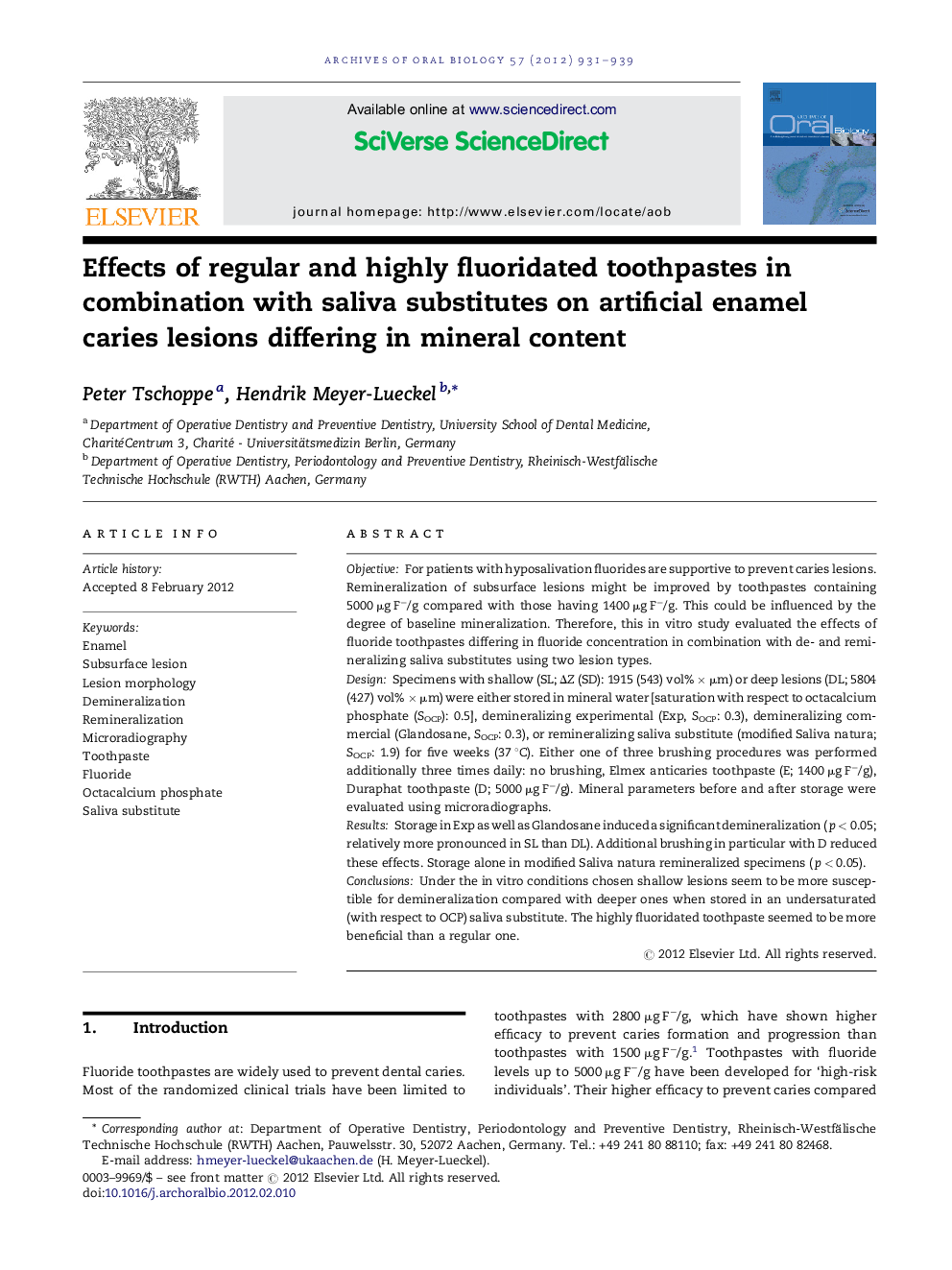| کد مقاله | کد نشریه | سال انتشار | مقاله انگلیسی | نسخه تمام متن |
|---|---|---|---|---|
| 6051855 | 1583334 | 2012 | 9 صفحه PDF | دانلود رایگان |

ObjectiveFor patients with hyposalivation fluorides are supportive to prevent caries lesions. Remineralization of subsurface lesions might be improved by toothpastes containing 5000 μg Fâ/g compared with those having 1400 μg Fâ/g. This could be influenced by the degree of baseline mineralization. Therefore, this in vitro study evaluated the effects of fluoride toothpastes differing in fluoride concentration in combination with de- and remineralizing saliva substitutes using two lesion types.DesignSpecimens with shallow (SL; ÎZ (SD): 1915 (543) vol% Ã μm) or deep lesions (DL; 5804 (427) vol% Ã μm) were either stored in mineral water [saturation with respect to octacalcium phosphate (SOCP): 0.5], demineralizing experimental (Exp, SOCP: 0.3), demineralizing commercial (Glandosane, SOCP: 0.3), or remineralizing saliva substitute (modified Saliva natura; SOCP: 1.9) for five weeks (37 °C). Either one of three brushing procedures was performed additionally three times daily: no brushing, Elmex anticaries toothpaste (E; 1400 μg Fâ/g), Duraphat toothpaste (D; 5000 μg Fâ/g). Mineral parameters before and after storage were evaluated using microradiographs.ResultsStorage in Exp as well as Glandosane induced a significant demineralization (p < 0.05; relatively more pronounced in SL than DL). Additional brushing in particular with D reduced these effects. Storage alone in modified Saliva natura remineralized specimens (p < 0.05).ConclusionsUnder the in vitro conditions chosen shallow lesions seem to be more susceptible for demineralization compared with deeper ones when stored in an undersaturated (with respect to OCP) saliva substitute. The highly fluoridated toothpaste seemed to be more beneficial than a regular one.
Journal: Archives of Oral Biology - Volume 57, Issue 7, July 2012, Pages 931-939